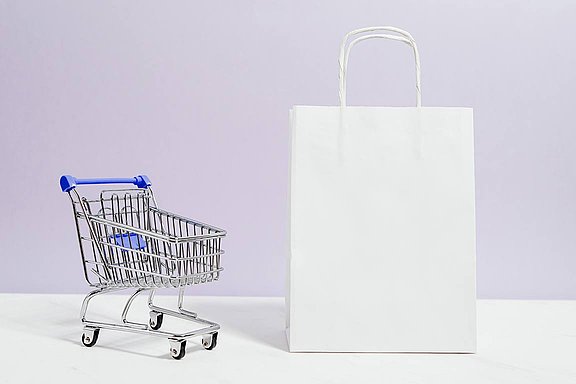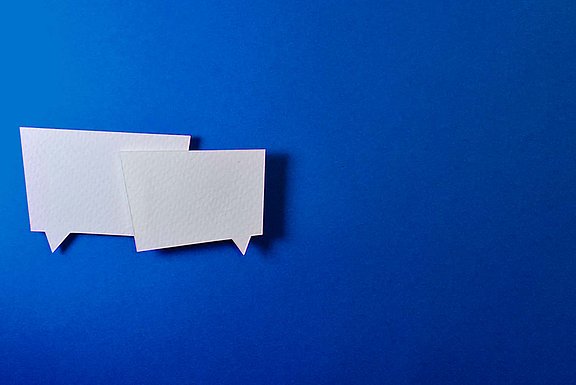Customer loyalty 2.0: Configurators as a secret weapon
Author: Klaus Pilsl
Hello and welcome! Today we're talking about how to not only win customers, but also keep them. In this blog article, we'll take a no-nonsense but thoroughly entertaining look at the various aspects that make product configurators so effective. Let's get started....
Individuality or compromise
In a world full of standard products, product configurators offer the opportunity to incorporate individual needs and wishes directly into the design process. This largely eliminates the need for compromise in product selection. Instead of having to choose a pre-designed option that is "closest" to what they want, customers can choose the specific features and characteristics that are most relevant to them. If done correctly (see blog "7 Tips: increasing Sales with Configurators"), this not only increases satisfaction with the purchased product, but also increases the likelihood that the customer will build a stronger bond with the product and the brand. In this sense, freedom of choice in product configurators becomes a central factor for customer loyalty.
Win repeat buyers as loyal fans
Customers who have once bought a customized product not only come back, they also become ambassadors of the brand. It's like the first time you see your favorite band live; you want to experience that feeling again and again. And that's exactly what happens when customers have the freedom to design products according to their own ideas. The result? A steady stream of satisfied repeat customers who not only buy more, but also talk positively about the brand.
Shopping experience 2.0: fun included
A good product configurator turns shopping into an interactive experience, and does not simply cover the business case minimally. It is not enough to simply offer the product in a designable form - the customer wants to be inspired. It is also the fun factor and the personal investment of time and creativity of the customer in this individual project that makes the difference. But beware: too many options can also be overwhelming. It's like an all-you-can-eat buffet: at first the variety is great, but when the plate gets too full, the enthusiasm quickly turns into overwhelm. A well-designed product configurator therefore finds the optimum between choice and clarity (see blog: "Paradox of choice in product configurators"). In this way, the experience remains positive, and customers change from passive buyers to engaged designers - without falling into "decision paralysis".

Configurator checklist
Avoid stumbling blocks.

Transparency: No surprises, only facts
We all know the feeling of uncertainty when the final price in the shopping cart is suddenly higher than expected. Product configurators remedy this by providing absolute transparency. Every selection, every change and every additional option is reflected in the price in real time. It's like having a personal shopping advisor at your side who tells you exactly what's what. That's how trust is built. And trust is the most important ingredient for customer loyalty.
Returns?
Returns are every online retailer's nightmare. But when customers have the option to design their own products, the likelihood of a return is drastically reduced. Why? Because the product is then not just an off-the-peg item, but a personal project into which time and heart and soul have flowed ("pride of ownership"). People don't want to part with that anymore. And if the customer has even personalized the product (e.g., printed his or her name on the product), the legal obligation to take the product back even expires.
Upselling and cross-selling: a little more always goes a long way
A well-designed product configurator can also serve as a perfect tool for upselling and cross-selling. But don't worry, this is not about imposing unnecessary extras on customers. It's about presenting them with options and additions that really add value and are also compatible. It's like a menu in a good restaurant: the main course is fantastic, but the side dishes make the meal perfect.
Feedback is worth its weight in gold
The interaction of customers with the product configurator provides companies with valuable information. This data is not only important for improving the current offering, but it also provides deep insights into customer wants and needs that can be used for future developments.

Excursus: The psychology of customer loyalty through configurators
The psychology of customer loyalty through configurators is based on various psychological principles and mechanisms that influence human behavior. Here are some important aspects that might play a role in this context:
- Self-determination and autonomy: Configurators give customers the opportunity to design their products themselves. This autonomy leads to a feeling of self-determination, which can strengthen interest in and loyalty to the product.
- Investment and commitment: When customers invest time and energy to configure a product, they develop a certain emotional attachment to it. They have literally put "something of themselves" into the product, which can lead to a deeper attachment.
- Experience and emotions: Interactive configurators create an experiential environment that can evoke positive emotions. Positive emotions are strongly linked to customer loyalty. If configuring a product causes joy or excitement, the customer is more likely to return.
- Individuality and identity: Customers often want to stand out from others. By being able to design a product according to their own ideas, they strengthen their sense of individuality and identity. They see the product as an extension of their personality, which can lead to a strong bond.
- Reward systems and confirmation: Rewards, whether in the form of discounts for configured products or exclusive offers, reinforce the positive experience. Positive feedback, whether through social media likes or reviews, also reinforces the customer's decision and promotes loyalty.
- Anticipation: The waiting time between configuration and actual delivery of the product can create a feeling of anticipation. Anticipation strengthens the emotional bond and creates a positive association with the company.
- Social proof: When customers have the opportunity to share their configured products on social media and receive positive reactions from friends and family, they feel validated and develop a positive attitude towards the company.
- Consistency and self-image: When customers design their own products, they create a self-image of their preferences and values. Consistency between this self-image and the purchased product increases customer satisfaction and loyalty.
Das Verständnis dieser psychologischen Aspekte ist entscheidend, um effektive Konfiguratoren zu entwickeln, die nicht nur das Kundenerlebnis verbessern, sondern auch die Kundenbindung stärken können. Indem sie Kunden in den Gestaltungsprozess einbeziehen und positive Emotionen hervorrufen, können Unternehmen langfristige Beziehungen zu ihren Kunden aufbauen.
Conclusion: Why product configurators should not be underestimated
Our numerous customers confirm it again and again: Since the introduction of the product configurator, many - for some customers even all - orders are only received via it. Customers love to design their products and come back again.
Product configurators are not a nice extra, but a central tool for customer loyalty. They offer individuality, encourage repeat purchases, and make the entire shopping process a pleasant experience.
FAQ
What is customer loyalty?
Customer loyalty refers to the strategies and measures a company takes to retain existing customers over the long term. The aim of customer retention is to encourage customers to buy regularly from a particular company rather than switching to a competitor.
Why is customer loyalty important for companies?
Customer loyalty is critical for businesses for several reasons:
- Long-term sales: Regular customers buy regularly from a company and therefore generate continuous sales. It is often more cost-effective to retain existing customers than to acquire new ones.
- Word-of-mouth marketing: Satisfied customers tend to share their positive experiences with others. Word-of-mouth is one of the most effective forms of marketing and can lead to new customers.
- Trust and credibility: Ongoing business relationships build trust between customers and businesses. When customers have trust, they are more willing to buy larger quantities or use more expensive services.
- Resilience to competition: Companies with strong customer relationships are more resilient to market fluctuations and competition. Loyalty can encourage customers to stay with a company even when competitors try to poach them.
- Feedback and improvement: Regular customers often provide valuable feedback that can help companies improve their products or services. This feedback is often more detailed and honest than that from new customers.
- Cost savings: It is more cost-effective to retain existing customers than to constantly acquire new ones. Customer acquisition is often expensive, while existing customer relationships can be maintained through good customer retention, which saves costs.
- Customer loyalty: Loyalty means that customers are less susceptible to offers from competitors. This creates a more stable and predictable customer base.
- Cross-selling and up-selling: Existing customers are more likely to buy additional products or services from the same company. By retaining customers, companies can take better advantage of cross-selling and up-selling opportunities.
What measures are generally in place for customer retention? Which customer loyalty instruments are used?
There are several customer loyalty measures that can be used successfully in many businesses. Here are some general strategies for customer retention:
- High-quality products/services: Customer loyalty begins with a high-quality offering. Products or services that meet customer requirements and exceed their expectations create a foundation for customer loyalty.
- Customer service: Excellent customer service is crucial. Fast response times, friendliness and competent support in the event of problems or questions strengthen the customer relationship.
- Customer satisfaction surveys: Regular surveys help to understand customer feedback and better meet their needs.
- Loyalty programs: Reward returning customers with loyalty programs that offer discounts, exclusive offers, or other perks.
- Personalization: Personalized offers, recommendations and communication show customers that you care about their individual needs.
- Customer communication: Keep in regular contact with your customers via newsletters, social media or personal messages. Inform them about new products, special offers or relevant industry news.
- Improve customer experience: Create a positive customer experience, whether online or in-store. A pleasant shopping experience will be remembered by customers.
- Complaint management: Respond quickly and professionally to complaints. Resolve issues to customer satisfaction and show that you take their concerns seriously.
- Trust and transparency: Build trust by communicating transparently about your products, prices and business practices.
- Birthday or anniversary gifts: Surprise customers with small gifts or discounts on special occasions.
- Configurators: Configurators enable individuality, increase customer loyalty and improve the overall shopping experience.
The specific customer loyalty tools your company should use will depend on your industry, target audience and resources.

Configurator checklist
Avoid stumbling blocks.


